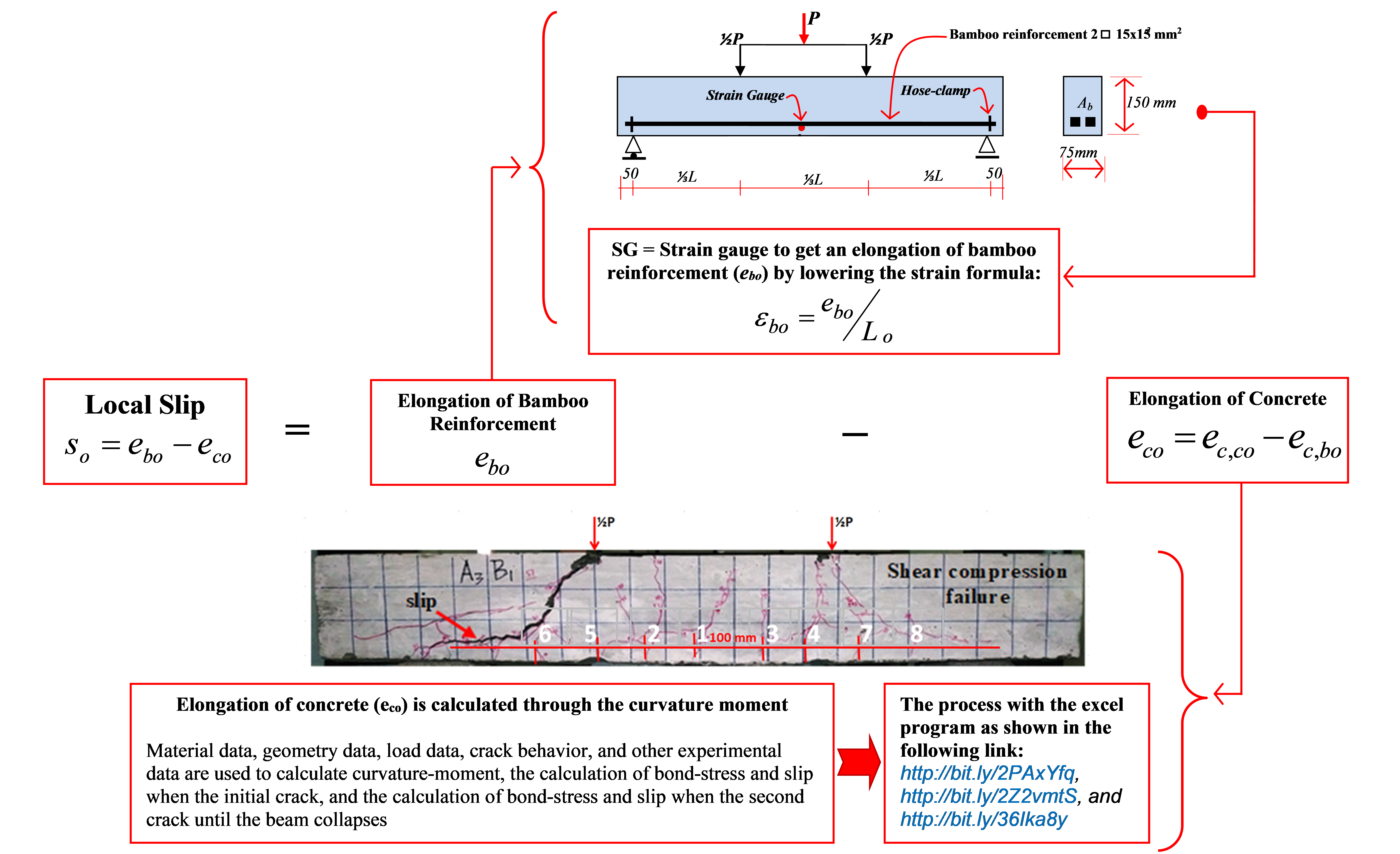 Open Access
Open Access
ARTICLE
The Measurement of the Local Slip in Bamboo-Reinforced Concrete Beams Using Moment-Curvature and Bond-Stress
Faculty of Engineering, University of Muhammadiyah Jember, Jember, 68121, Indonesia
*
Corresponding Author: Muhtar. Email: muhtar@unmuhjember.ac.id
(This article belongs to the Special Issue: Renewable building materials and properties)
Journal of Renewable Materials 2021, 9(9), 1631-1646. https://doi.org/10.32604/jrm.2021.015452
Received 19 December 2020; Accepted 07 February 2021; Issue published 23 April 2021
Abstract
This paper presents a method of measuring local slip in bamboo-reinforced concrete beams. Local slips (so) are calculated by reducing the elongation of the bamboo reinforcement (ebo) with the elongation of the concrete (eco). The elongation of bamboo reinforcement (ebo) is determined in two ways, namely, read directly through a straingauge mounted on the bamboo reinforcement and calculated based on the force analysis or curvature moment as a control. The elongation of the concrete (eco) is calculated using force analysis or curvature moment. The process of calculating curvature moments and bond stress employs the Excel program. The steps in calculating the elongation of concrete (eco) consist of calculating the curvature moment, calculating the bond-stress at the initial crack, and calculating the bond-stress at the second crack until the beam collapses. Further, the results of the calculation of the elongation of the concrete (eco) and the elongation of the bamboo reinforcement (ebo) resulting from the reading of the strain-gauge are substituted in the local slip calculation equation. The results of the calculation analysis show that the local slip is approaching the local slip resulting from the experiment. The relationship behavior of bond-stress vs. slip indicates conformity with the experimental results. The local slip calculation based on the moment-curvature can be considered as control of the experiment result.Graphic Abstract

Keywords
Cite This Article
 Copyright © 2021 The Author(s). Published by Tech Science Press.
Copyright © 2021 The Author(s). Published by Tech Science Press.This work is licensed under a Creative Commons Attribution 4.0 International License , which permits unrestricted use, distribution, and reproduction in any medium, provided the original work is properly cited.


 Submit a Paper
Submit a Paper Propose a Special lssue
Propose a Special lssue View Full Text
View Full Text Download PDF
Download PDF Downloads
Downloads
 Citation Tools
Citation Tools